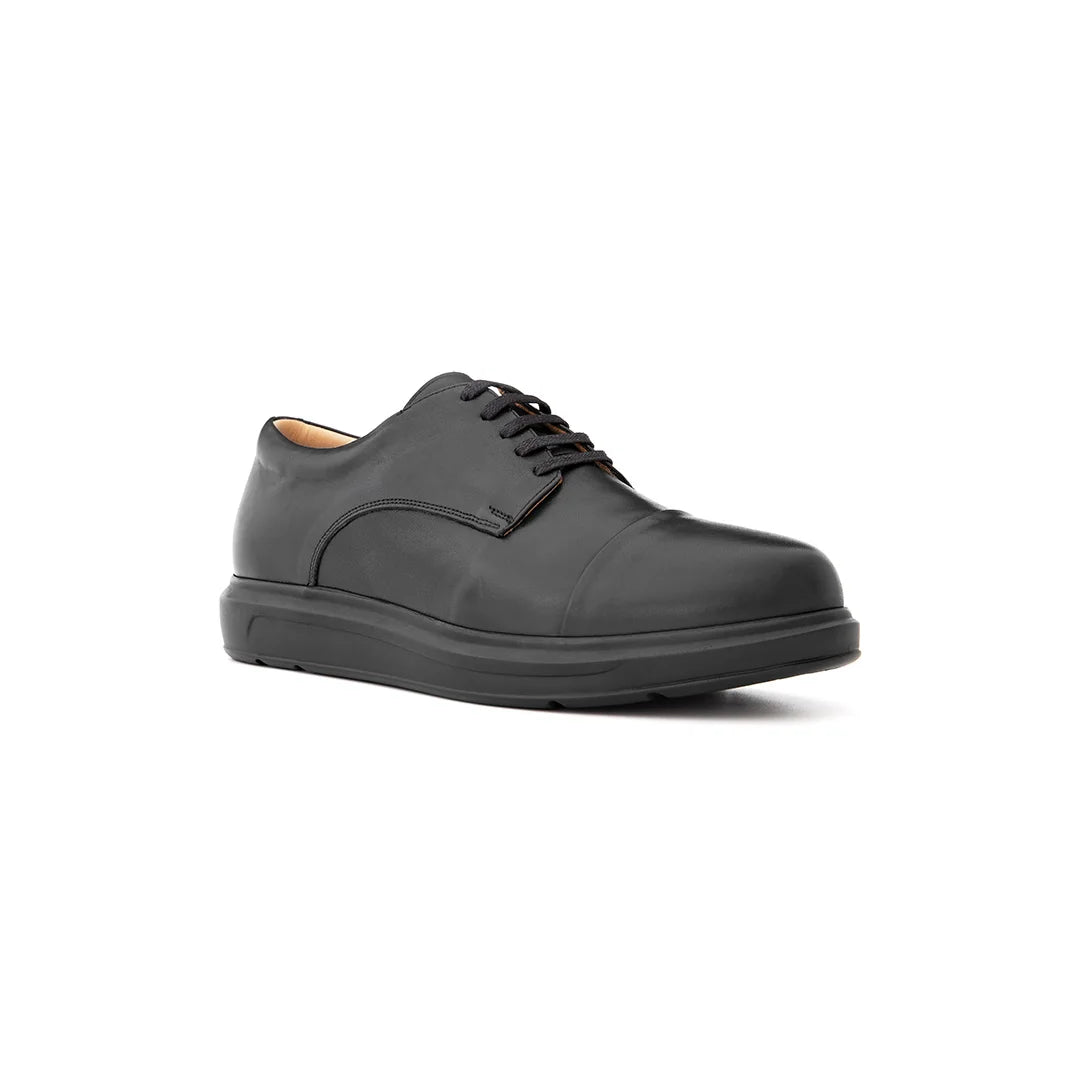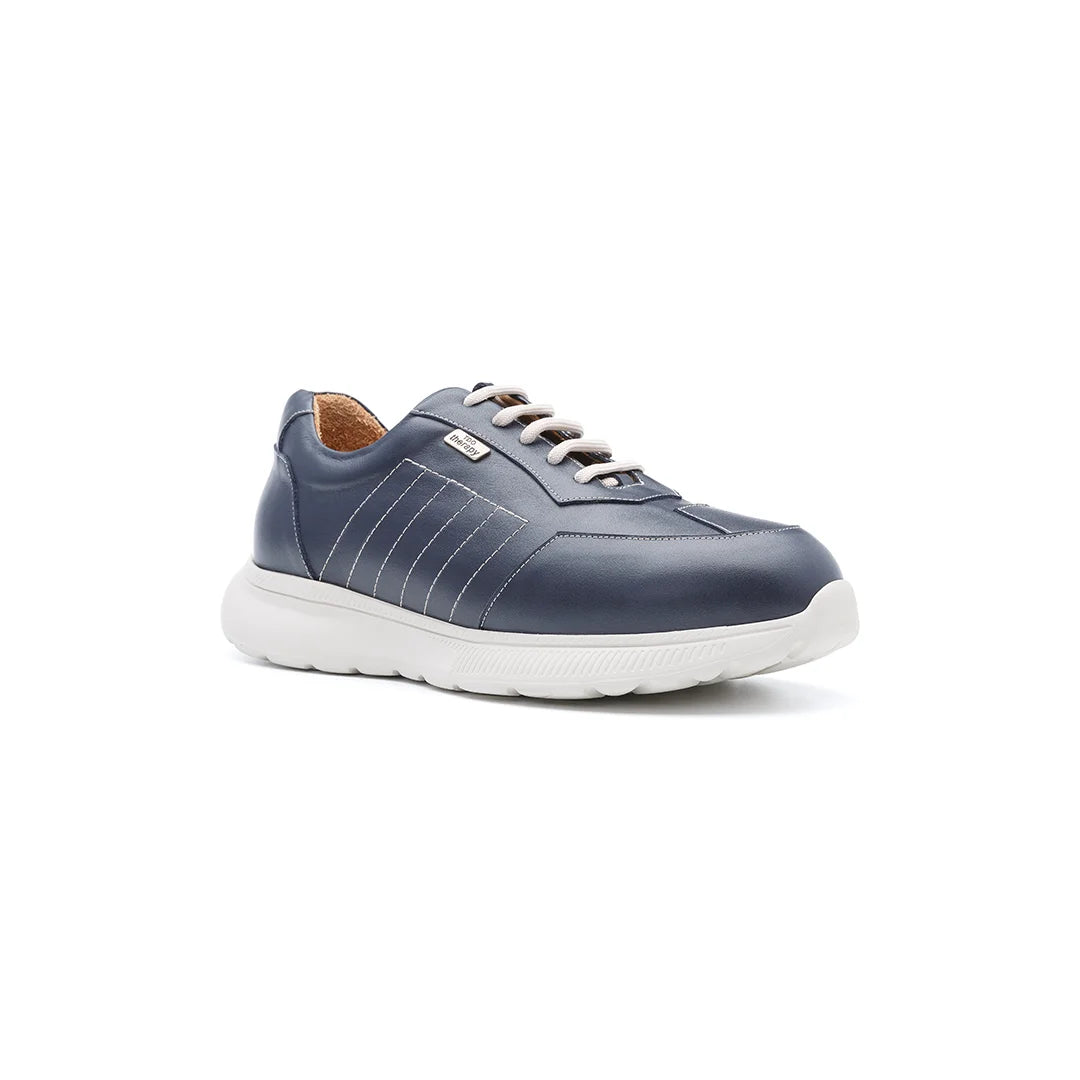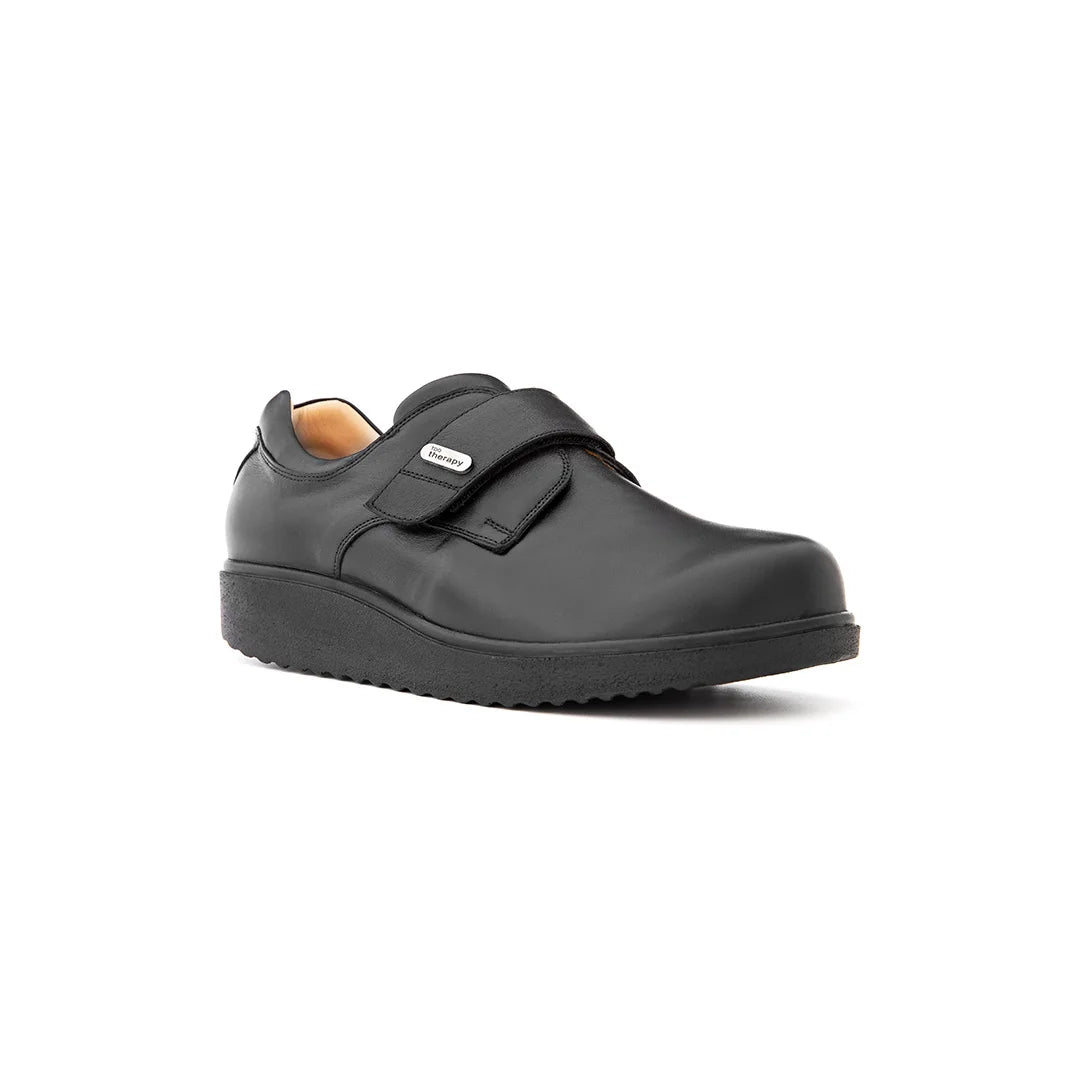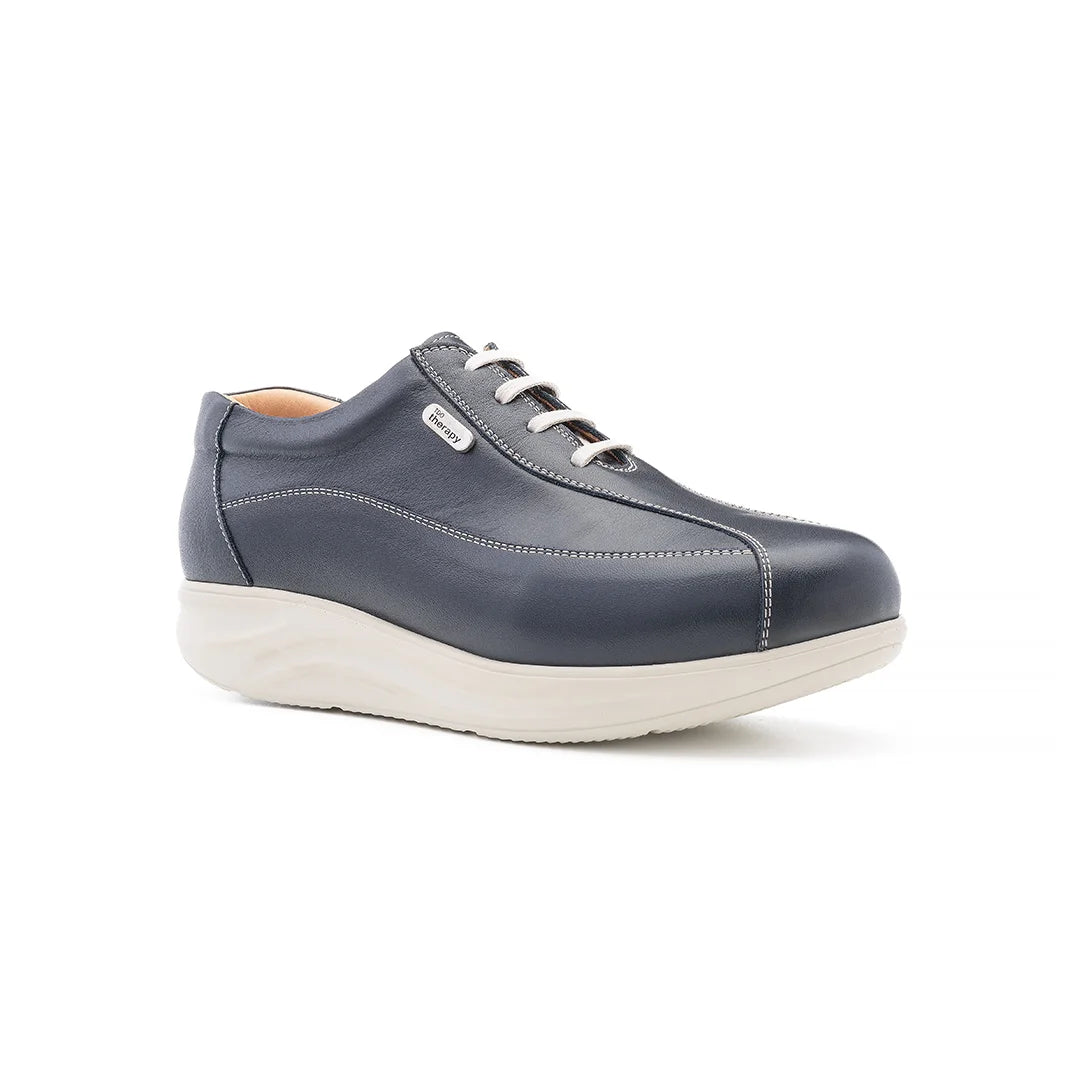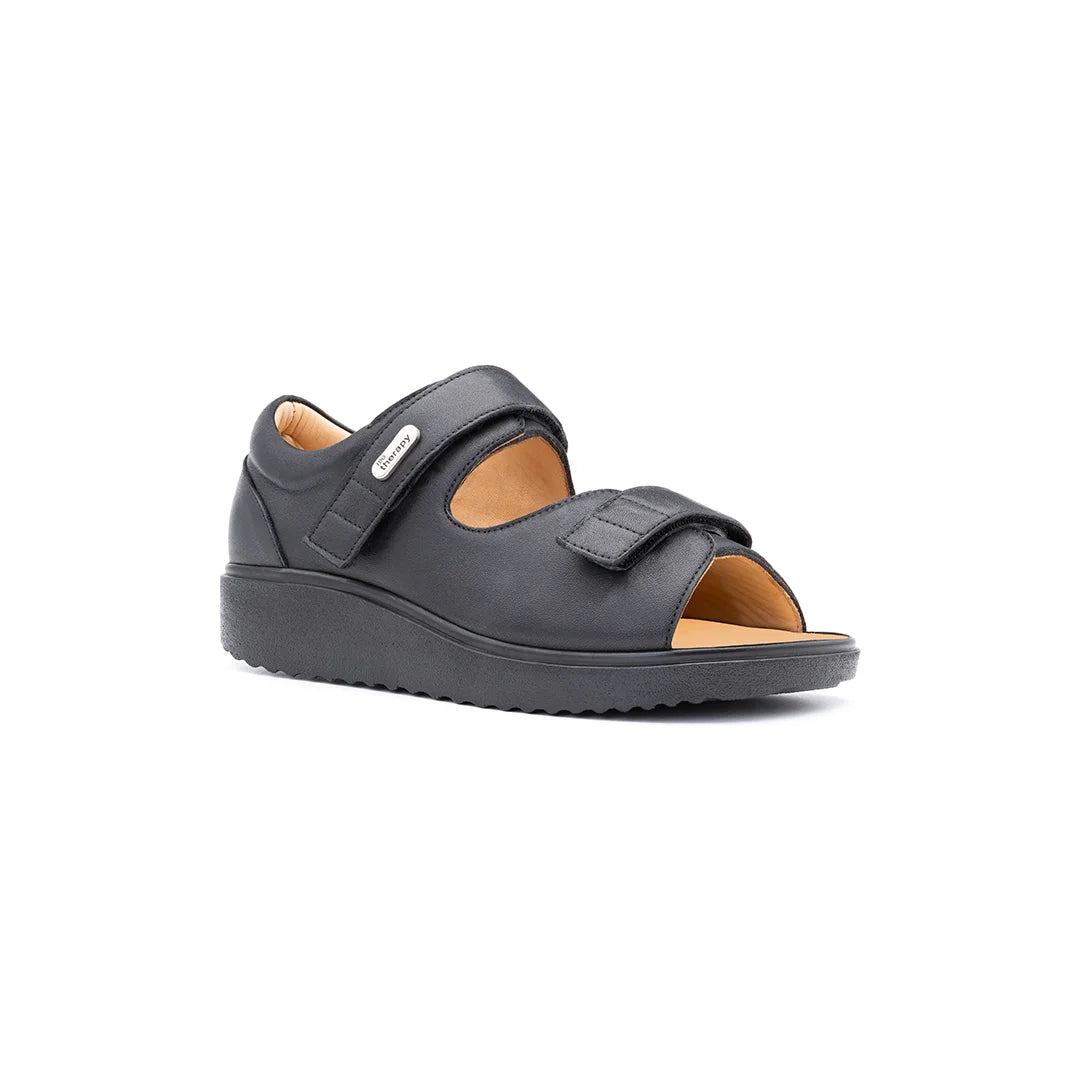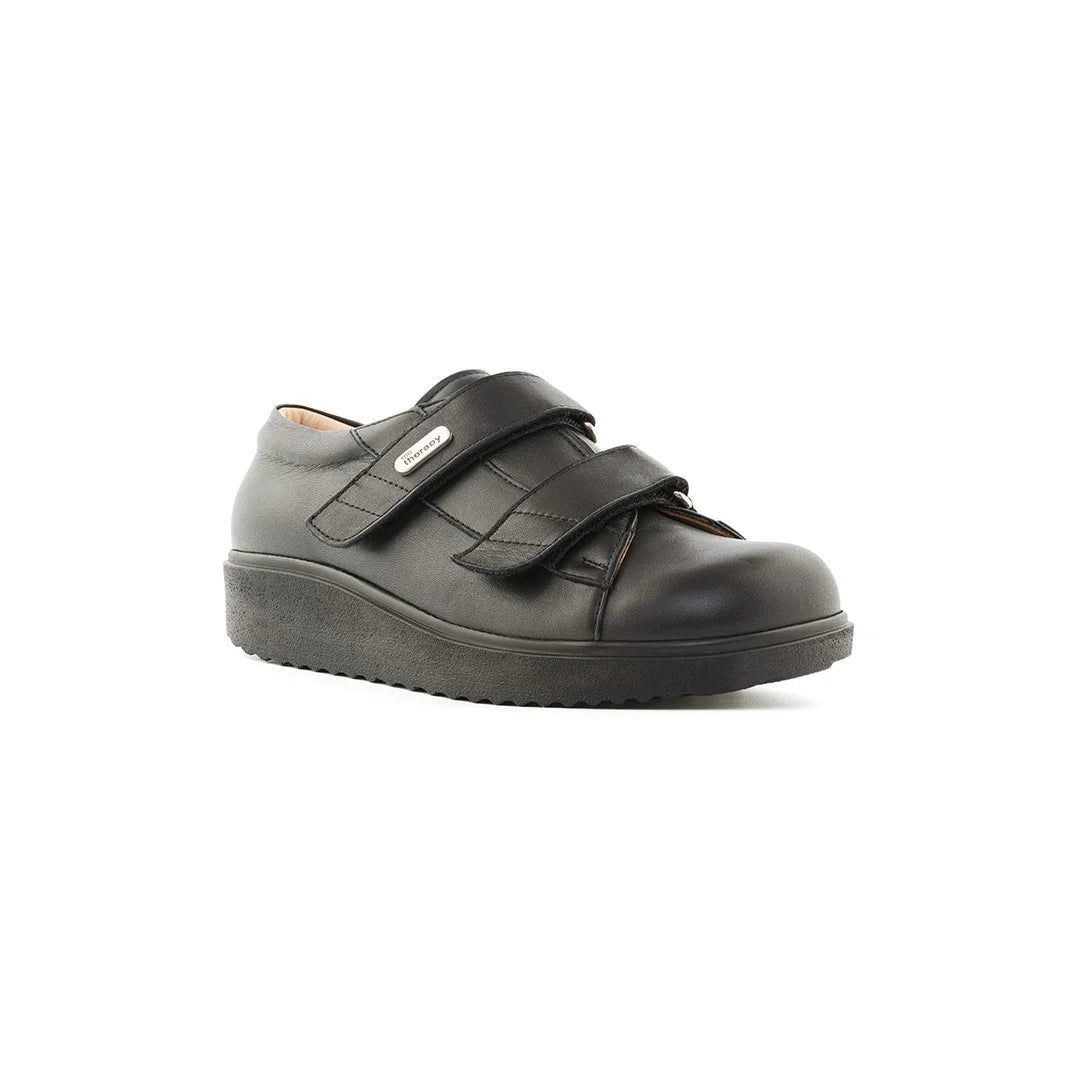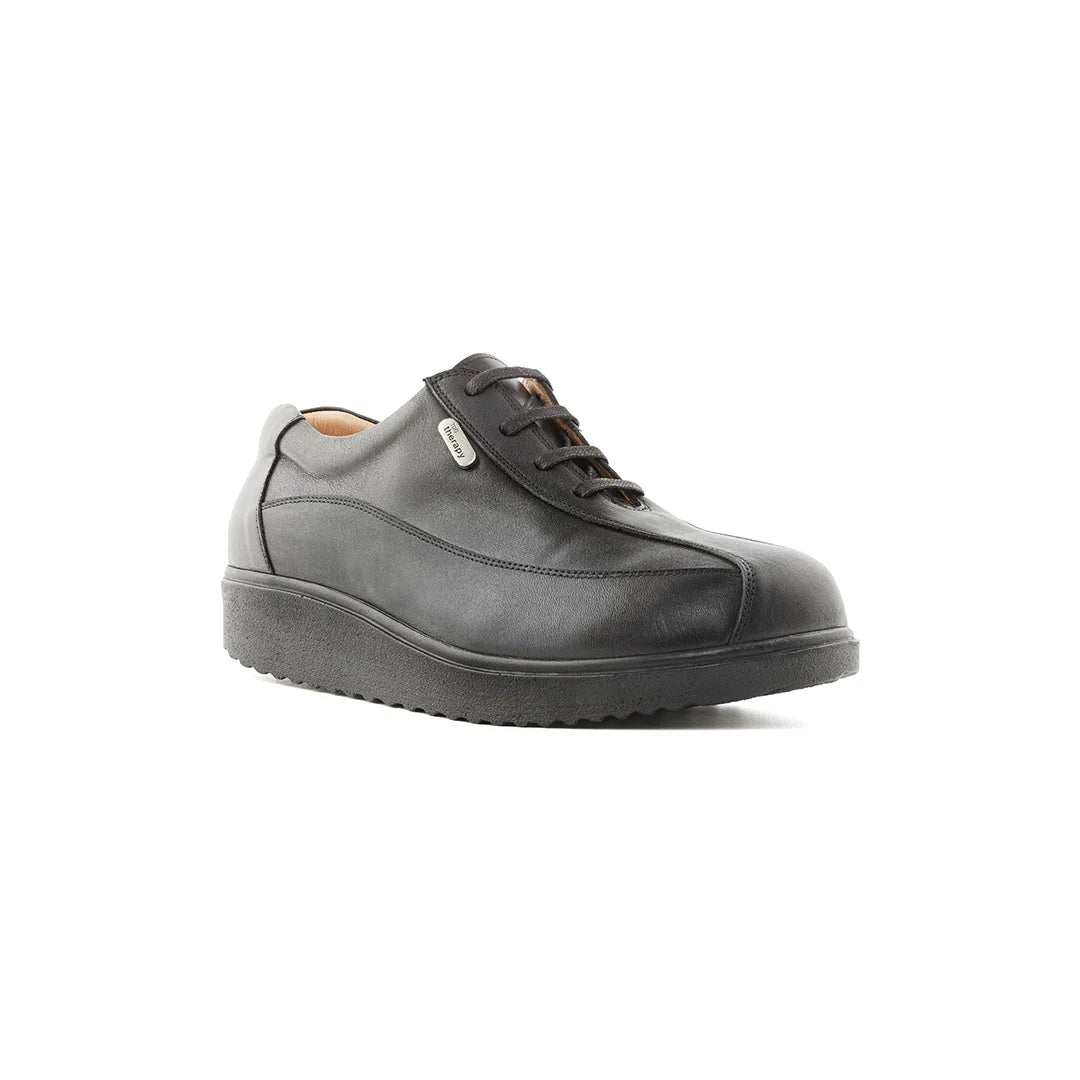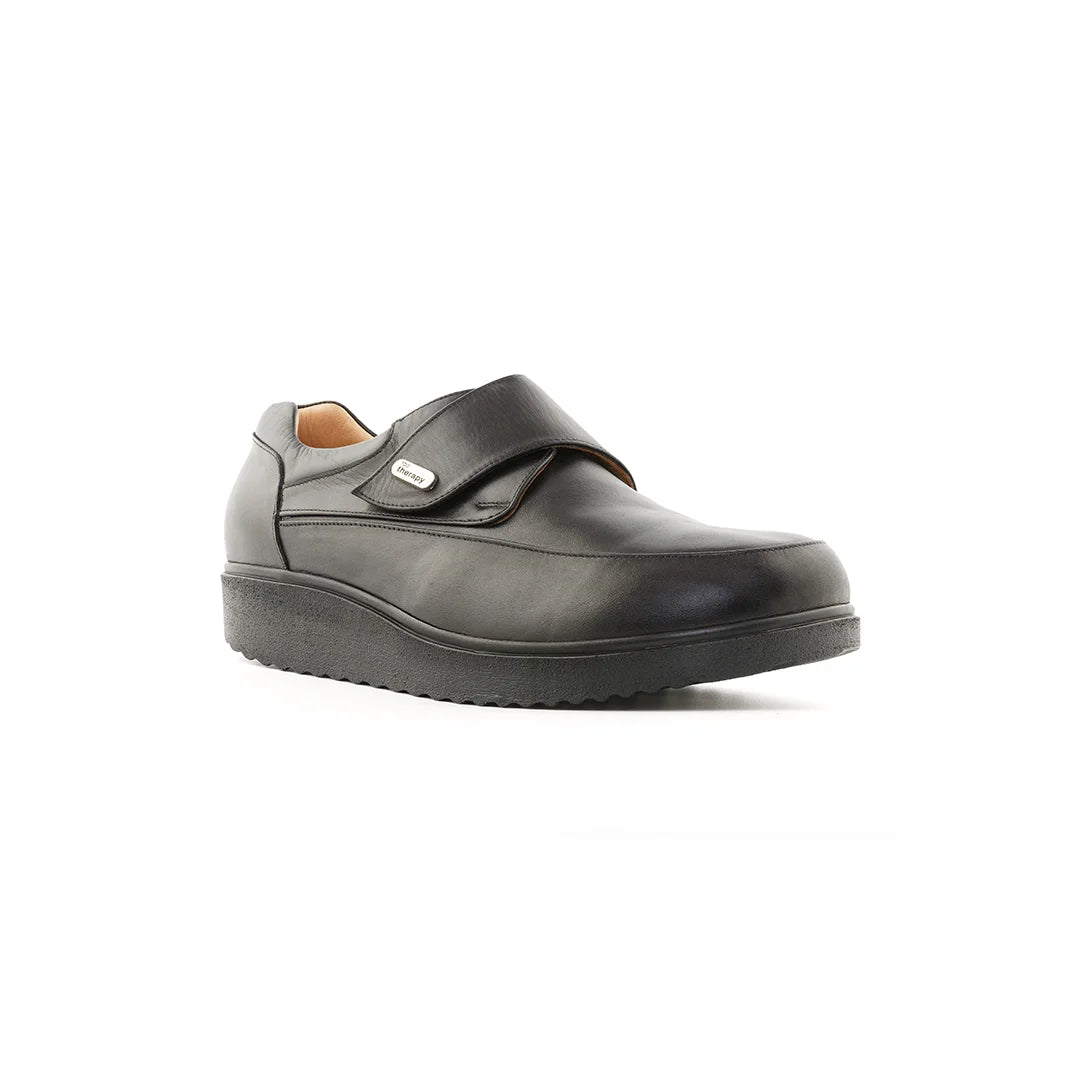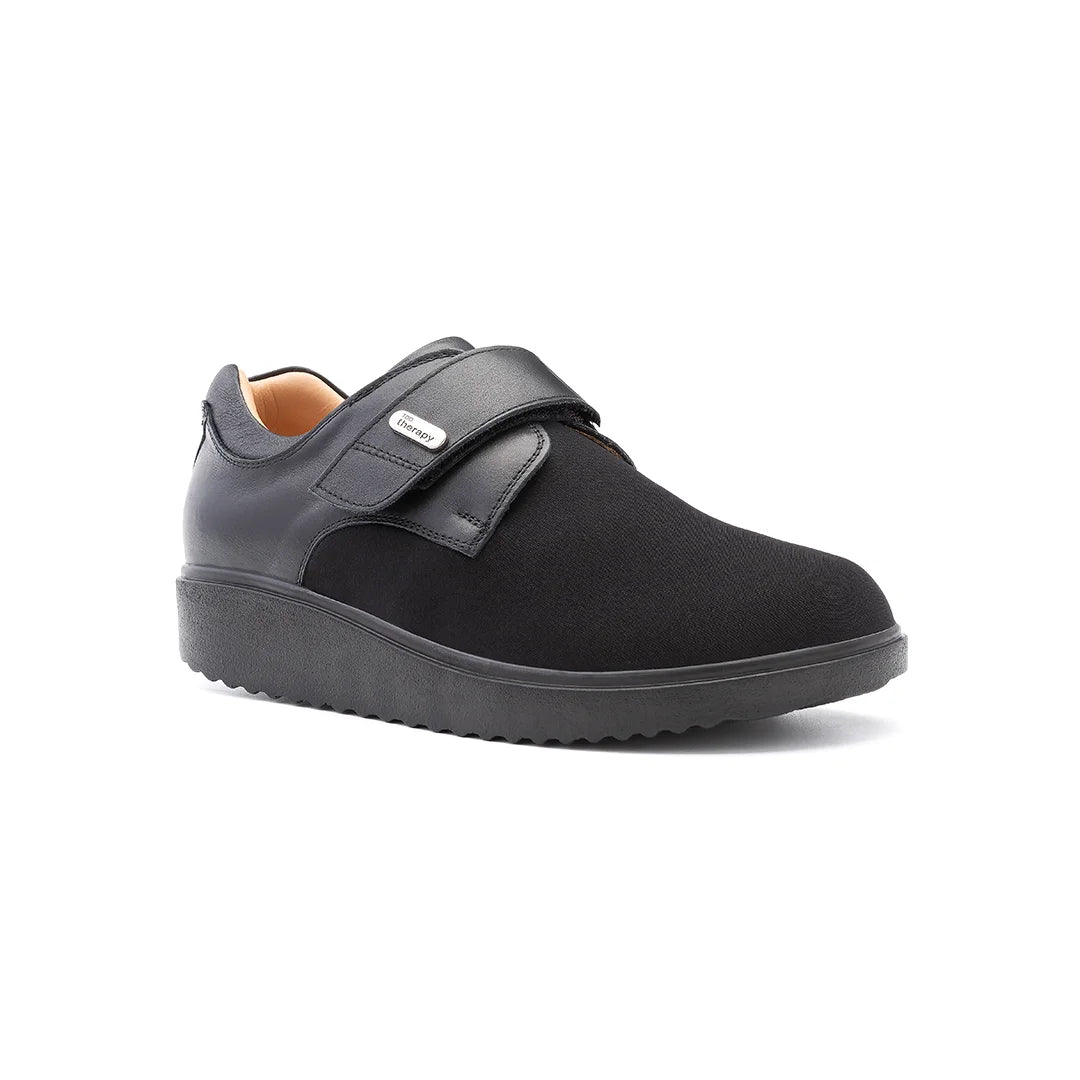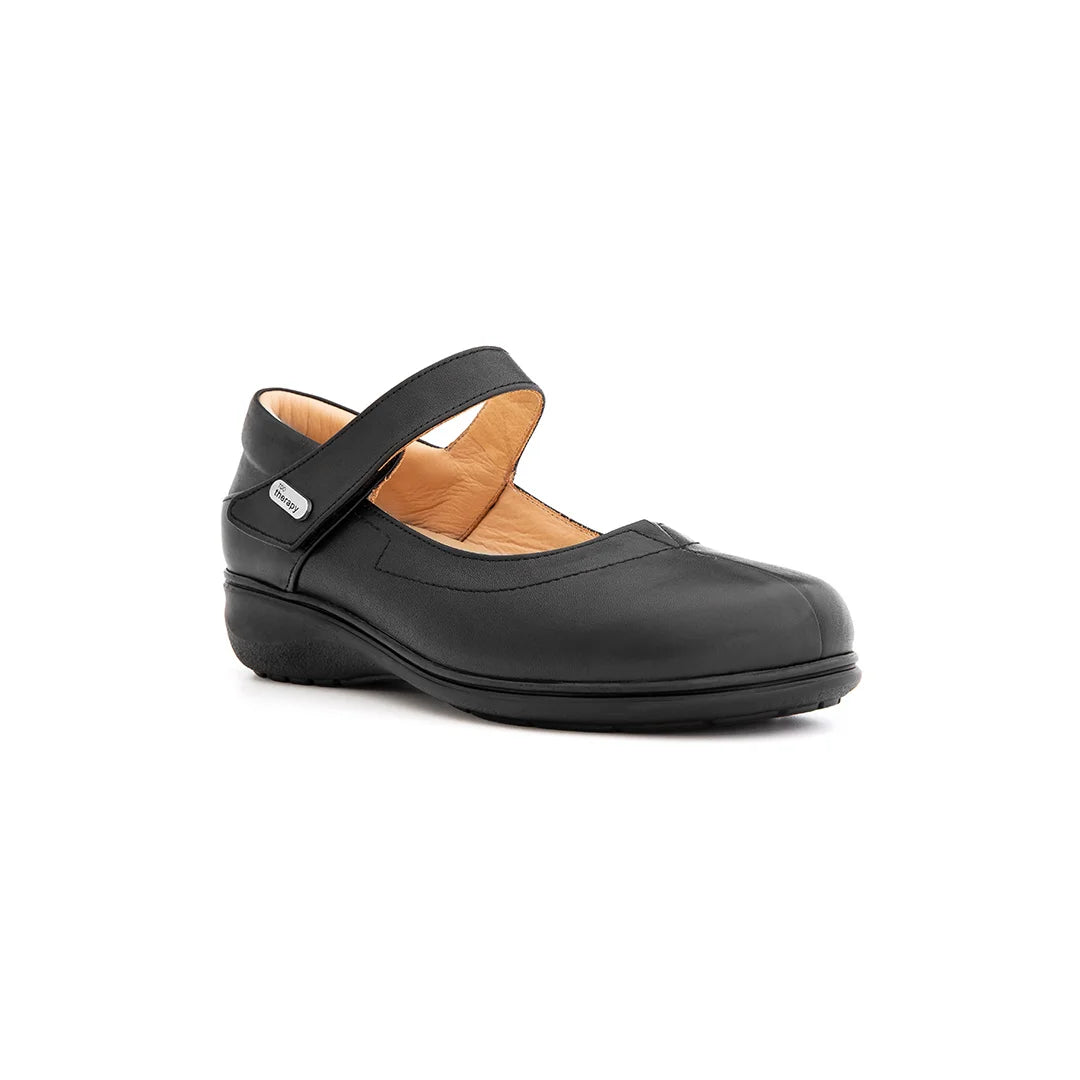Having swollen feet can be a real pain, making everyday things like walking or even just standing uncomfortable. Finding shoes that fit right becomes a huge problem. That's why picking the right orthopaedic shoes for swollen feet is so important. They can make a big difference, helping you feel better and get around easier. This guide will walk you through everything you need to know to pick the best footwear for your needs.
Key Takeaways
- Understanding why your feet swell is the first step to finding the right shoes.
- Look for shoes with adjustable bits, stretchy stuff, and plenty of room inside.
- Choosing the right orthopaedic shoes for swollen feet means thinking about your specific foot shape and needs.
- Pedors offers some good options, like their Classic MAX and Super MAX ranges, made for comfort and support.
- Properly looking after your orthopaedic shoes helps them last longer and keep doing their job.
Understanding Swollen Feet Conditions
Common Causes of Foot Swelling
Right, let's get down to the nitty-gritty of why our feet might decide to inflate like balloons. There's a whole bunch of reasons, honestly. Sometimes it's something simple, like standing for too long or a bit of hot weather making things expand. Other times, it can be a sign of something a bit more serious going on. We're talking about things like:
- Pregnancy (hello, water retention!)
- Certain medications (some can really mess with your fluid balance)
- Underlying health conditions (like heart, kidney, or liver problems)
It's always a good idea to get it checked out by a doctor if you're worried, especially if the swelling is sudden or painful.
Recognising Edoema and Lymphedema
Okay, so oedema and lymphoedema are two specific types of swelling that are worth knowing about. Oedema is basically fluid build-up in your tissues. You can often tell if you've got it by pressing on the swollen area – if your finger leaves a dent that takes a while to disappear, that's a pretty good sign. Lymphoedema, on the other hand, is when the lymphatic system isn't working properly, leading to a build-up of lymph fluid. This can happen after surgery or because of certain conditions. Spotting the difference can be tricky, but here's a quick rundown:
| Feature | Oedema | Lymphoedema |
|---|---|---|
| Cause | Fluid retention | Lymphatic system dysfunction |
| Texture | Often soft and pitting | Can be firmer, less likely to pit |
| Other Symptoms | May have other related health issues | Skin changes, recurring infections possible |
Impact of Swelling on Footwear Choices
Swollen feet can turn finding comfortable shoes into a proper nightmare, can't they? Suddenly, your favourite pair of trainers feel like they're two sizes too small, and even slippers become instruments of torture. The main problem is that regular shoes just aren't designed to accommodate the extra volume. This can lead to:
- Increased pressure and rubbing (hello, blisters!)
- Restricted blood flow (not good for healing)
- Pain and discomfort (obvious, but worth saying!)
That's why orthopaedic shoes designed for swollen feet are such a game-changer. They offer the extra width, depth, and adjustability we need to keep our feet happy and healthy, even when they're feeling a bit puffy.
Key Features of Orthopaedic Shoes for Swollen Feet
Finding the right orthopaedic shoes when you've got swollen feet can feel like a real challenge. It's not just about size; it's about features that actually make a difference to your comfort and well-being. We're going to break down the key things to look for so you can make an informed choice.
Importance of Adjustable Closures
Adjustable closures are a game-changer. Think about it: your feet might swell more at certain times of the day. Shoes with Velcro straps, buckles, or laces let you customise the fit as needed. This means you can loosen them when your feet are more swollen and tighten them for better support when the swelling goes down. It's all about having that flexibility.
Benefits of Stretchable Materials
Stretchable materials are your best friend. Normal shoes can feel tight and restrictive, but stretchable uppers – often made from materials like neoprene or special knits – gently mould to the shape of your foot. This reduces pressure points and allows for natural movement, even when your feet are swollen. Plus, they're often more breathable, which helps keep your feet cool and dry.
Adequate Depth and Width for Comfort
Depth and width are super important. Standard shoes often don't offer enough room, especially if you're dealing with significant swelling or conditions like oedema. Look for shoes that are specifically designed with extra depth and a wider toe box. This gives your toes plenty of wiggle room and prevents rubbing, which can lead to blisters and other problems.
Getting the right depth and width can really transform your experience. It's not just about squeezing your foot into a shoe; it's about providing a comfortable, supportive environment that accommodates swelling without compromising on stability.
Choosing the Right Orthopaedic Shoes
Okay, so we've talked a lot about swollen feet and the shoes that can help. Now, let's get down to the nitty-gritty: how do we actually pick the right orthopaedic shoes for ourselves? It's not always a walk in the park, but with a bit of knowledge, we can make the process much easier.
Considerations for Men's Orthopaedic Shoes
Men's feet, generally speaking, tend to be wider and larger than women's. So, when we're looking at orthopaedic shoes for men, we need to keep a few things in mind.
- Width is key. Make sure there's enough room across the ball of the foot. Shoes that are too narrow can cause all sorts of problems, like bunions or pinched nerves.
- Support matters. Look for shoes with good arch support and a sturdy heel counter. This will help to keep the foot stable and prevent overpronation.
- Adjustability is a bonus. Features like adjustable straps or laces can be really helpful, especially if swelling fluctuates throughout the day.
Finding the right fit can sometimes feel like a mission, but it's worth the effort. Ill-fitting shoes can make foot problems worse, so take your time and don't be afraid to try on a few different pairs.
Considerations for Women's Orthopaedic Shoes
For women, the considerations are similar, but there are a few extra things to think about. Women's feet often have a higher arch and a narrower heel compared to men's.
- Heel height. While some women might want a bit of a heel, it's generally best to stick to low heels or flats when dealing with swollen feet. High heels can put extra pressure on the forefoot and make swelling worse.
- Toe box shape. Avoid shoes with pointy toe boxes, as these can squish the toes and cause discomfort. A wider, rounder toe box is usually a better bet.
- Cushioning is important. Look for shoes with plenty of cushioning, especially in the heel and forefoot. This will help to absorb impact and reduce pain.
Finding the Perfect Fit for Your Needs
Ultimately, the best way to find the perfect fit is to get your feet measured properly. We can do this at most shoe shops, and it's a good idea to do it regularly, as our feet can change over time. Also, consider these points:
- Measure your feet at the end of the day, when they're likely to be at their largest due to swelling.
- Wear the type of socks you'll usually wear with the shoes when you go for a fitting.
- Don't be afraid to try on different sizes and widths. What works for one person might not work for another.
And remember, many places offer free returns and exchanges. If you get them home and they don't feel right, you can send them back without any stress. It's all about finding what works best for us.
Benefits of Wearing Specialised Footwear
Enhanced Comfort and Pain Relief
Let's be honest, dealing with swollen feet can be a real pain – literally! That's where specialised footwear comes in. The right pair of orthopaedic shoes can make a world of difference in your day-to-day comfort. We're talking about reducing pressure points, cushioning each step, and generally making it easier to get around without wincing. It's not just about comfort; it's about reclaiming your life, one step at a time. Pain relief is a biggie, and it's something we all deserve.
Improved Mobility and Stability
It's easy to underestimate how much swollen feet can affect your balance and movement. Specialised shoes are designed to provide that extra bit of stability and support. Think about it: a wider base, better arch support, and secure fastenings can all contribute to a more confident stride. We've found that people often feel more secure and less prone to falls when they're wearing the right footwear. It's about feeling steady on your feet, no matter what the day throws at you.
Preventing Further Foot Complications
Ignoring swollen feet can lead to a whole host of other problems down the line. From skin irritation and infections to more serious issues like ulcers, it's really not worth the risk. Specialised footwear can help prevent these complications by providing proper support, reducing friction, and promoting better circulation. We see it as an investment in your long-term foot health. It's much easier to prevent problems than it is to treat them, and the right shoes can play a big part in that.
Wearing the correct footwear is more than just a comfort choice; it's a proactive step towards maintaining foot health and preventing future issues. By addressing the specific needs of swollen feet, we can avoid a cascade of complications and maintain an active lifestyle.
Caring for Your Orthopaedic Shoes
Looking after your orthopaedic shoes is super important if you want them to last and keep doing their job properly. It's not just about keeping them clean; it's about maintaining their support and comfort features. We've put together some tips to help you get the most out of your footwear.
Maintaining the Quality of Your Footwear
First things first, regular cleaning is key. Wipe down your shoes with a damp cloth to remove any dirt or grime. For tougher stains, a mild soap solution can work wonders. Just make sure you let them air dry completely, away from direct heat, as this can damage the materials. Also, consider using shoe trees to help maintain their shape when you're not wearing them. This simple step can prevent creasing and prolong the life of your shoes.
Tips for Prolonging Shoe Lifespan
- Rotate your shoes. Don't wear the same pair every day. Giving them a break allows the materials to recover and reduces wear and tear.
- Use a shoehorn. This helps to protect the heel counter and makes it easier to slip your shoes on and off without damaging them.
- Store them properly. Keep your shoes in a cool, dry place, away from direct sunlight. A shoe rack or storage box can help to keep them organised and protected.
Proper care extends the life of your orthopaedic shoes, ensuring they continue to provide the support and comfort you need. Regular cleaning, correct storage, and preventative measures are all part of a good maintenance routine.
When to Consider a New Pair
Even with the best care, orthopaedic shoes won't last forever. Keep an eye out for signs that it might be time for a new pair. These include:
- Visible wear and tear: If the soles are worn down, the uppers are cracked, or the stitching is coming undone, it's time to consider a replacement.
- Loss of support: If your shoes no longer provide the same level of support and comfort, it's a sign that the cushioning or structure has deteriorated.
- Changes in your feet: If your foot condition has changed, or if you've experienced a change in weight, you may need a different size or style of shoe. Regular check-ups with a podiatrist can help you stay on top of this.
Addressing Specific Foot Conditions
Orthopaedic Shoes for Diabetic Feet
When you're dealing with diabetes, foot care becomes super important. Diabetic neuropathy can reduce sensation in your feet, meaning you might not notice small cuts or blisters. Orthopaedic shoes designed for diabetics usually have extra depth and width to accommodate custom orthotics and prevent pressure points. We always make sure to check our feet daily for any signs of irritation, and wearing the right shoes is a big part of that.
- Seamless interiors to reduce friction.
- Extra depth to accommodate orthotics.
- Breathable materials to keep feet dry.
It's not just about comfort; it's about preventing serious complications like ulcers and infections. Getting the right fit is key, so don't hesitate to get professionally measured.
Footwear Solutions for Arthritic Feet
Arthritis can make finding comfortable shoes a real challenge. The pain and inflammation in our feet mean we need shoes that offer excellent cushioning and support. Look for features like:
- Adjustable closures to accommodate swelling.
- Wide toe boxes to prevent pressure on joints.
- Rocker soles to reduce stress on the foot.
We've found that shoes with good arch support and shock absorption can make a massive difference in managing pain and improving mobility. It's worth investing in a quality pair that will help you stay active and comfortable.
Support for Venous Insufficiency
Venous insufficiency can cause swelling and discomfort in the feet and ankles. Shoes that provide good support and compression can help improve circulation and reduce swelling. We often look for:
- Shoes with adjustable straps or laces to accommodate swelling throughout the day.
- Compression socks to improve blood flow.
- Shoes with a supportive footbed to reduce strain on the veins.
It's also a good idea to elevate your feet whenever possible to help reduce swelling. Finding the right shoes is just one part of managing venous insufficiency, but it can make a big difference in your overall comfort and well-being.
Conclusion
So, there you have it. Picking the right orthopaedic shoes for swollen feet really makes a difference. It's not just about looking good, though that helps. It's about feeling good, moving around without pain, and just getting on with your day. Remember, a bit of research and trying on different pairs can go a long way. Your feet will thank you for it, honestly. Don't settle for shoes that pinch or rub; find ones that feel like a hug for your feet. You deserve that comfort.
Frequently Asked Questions
Why do my feet swell up?
Swollen feet can happen for many reasons, like standing a lot, being pregnant, or having certain health problems such as heart, kidney, or liver issues. It's always best to chat with a doctor to find out why your feet are swelling.
What makes orthopaedic shoes different?
Orthopaedic shoes are special shoes designed to give your feet extra room, support, and comfort, especially if they're swollen or have other problems. They often have adjustable straps and stretchy bits to fit snugly without squeezing.
Are orthopaedic shoes really comfortable?
Yes, absolutely! Orthopaedic shoes are made to be super comfy and supportive. They help reduce pain and make walking easier, which is great if you have swollen feet or other foot issues.
How do I choose the right orthopaedic shoes for me?
When picking out orthopaedic shoes, look for ones that are wide and deep enough for your feet, have adjustable fastenings (like hook-and-loop straps), and are made from soft, stretchy materials. It's also a good idea to measure your feet properly, especially at the end of the day when they might be a bit bigger.
Why are Pedors shoes good for swollen feet?
Pedors shoes are great for swollen feet because they are designed with special stretchy material called Pedoprene and have plenty of room. This means they can fit many different foot shapes and sizes, even if your feet are very swollen due to conditions like oedema or lymphoedema.
How should I care for my orthopaedic shoes?
Looking after your orthopaedic shoes means keeping them clean and dry. Follow the care instructions that come with your shoes. If they get worn out or stop feeling supportive, it might be time to get a new pair to keep your feet happy and healthy.



